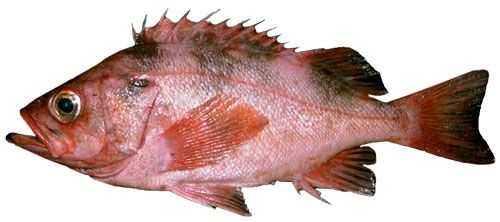Darkblotched Rockfish

Species Details
Sebastes Crameri
Sebastidae
Scorpaeniformes
Offshore (Surface Waters), Intercontinental Shelves, Muddy Bottoms, Rocky Bottoms
45 - 60 lbs.
9" - 23"
Darkblotched Rockfish (Sebastes crameri) Fish Description
Darkblotched rockfish, also known under the names of Blackblotched rockfish, blackmouth rockfish, and blotchie, is a deep-bodied fish.
They are reddish with around five or so discrete, black blotches on their back extending well across their lateral line. Underwater, the Adult Darkblotched Rockfish are seen to be white or even pink with brown bars, but once captured, their colors change from pink to an orange hue with three to five dark bars on their skin.
Their second anal-fin spine is shorter in comparison to their third anal fin, and they have a dark blotch once again on their gill cover.
Similar species to the Darkblotched Rockfish are the Sharpchin Rockfish, Harlequin Rockfish, Half Banded Rockfish, Pacific Ocean Perch, and the Yellowmouth Rockfish.
Diet & Size
Adult Darkblotched Rockfish primarily feed on invertebrates. Darkblotched rockfish can grow up to the maximum recorded length of 23 in.
Interesting Facts about Darkblotched Rockfish
- The oldest, of the maximum age, known for the Darkblotched Rockfish is 105 years old.
- The natural predators to the juvenile Darkblotched Rockfish are the Albacore, Salmon, and the Pacific Hake.
- Female Darkblotched Rockfish are most often found to be larger than their male counterparts.
- Darkblotched Rockfish were once severely overfished.
- Their species was considered rebuilt last 2017.
- Darkblotched Rockfish have a closed swim bladder which makes them vulnerable to injury when they are fished from deep waters.
- They are considered also venomous.
Darkblotched Rockfish - Fishing Techniques
Darkblotched Rockfish are commonly caught off the Washington coasts by commercial fisheries using trawls and longline gear. Fishing for a rockfish, at times you would only need to use a light tackle and a small hook bait rig. No bait is required, sometimes, but to make it more appealing a small strip of squid would do the trick.
But due to the current status of the Darkblotched Rockfish, similarly to the Bocaccio rockfish being overfished for the past decade, due to commercial fishermen targeting this fish for its shelf life and then abundance, they are still considered to be in the process of rebuilding and boosting their numbers, and having fishermen avoid catching these species.
Habitat and Distribution
Juvenile Darkblotched Rockfish are known to be pelagic, typically inhabiting offshore waters near the surface, in benthic habitats with soft muddy bottoms, or perched on rocks or cobble. Some young Darkblotched Rockfish have also been found to be located at the base of deepwater oil platforms.
As the Darkblotched Rockfish age and grow in size, they seem to remain demersal, but migrate to deeper waters, with adults typically occurring at 460ft - 720 ft. However, some have been observed to be in shallow waters of 83ft or can go as deep as 2,982 ft.
The Darkblotched Rockfish are observed in the range from the southwestern Bering Sea up to Santa Catalina Island, California.







